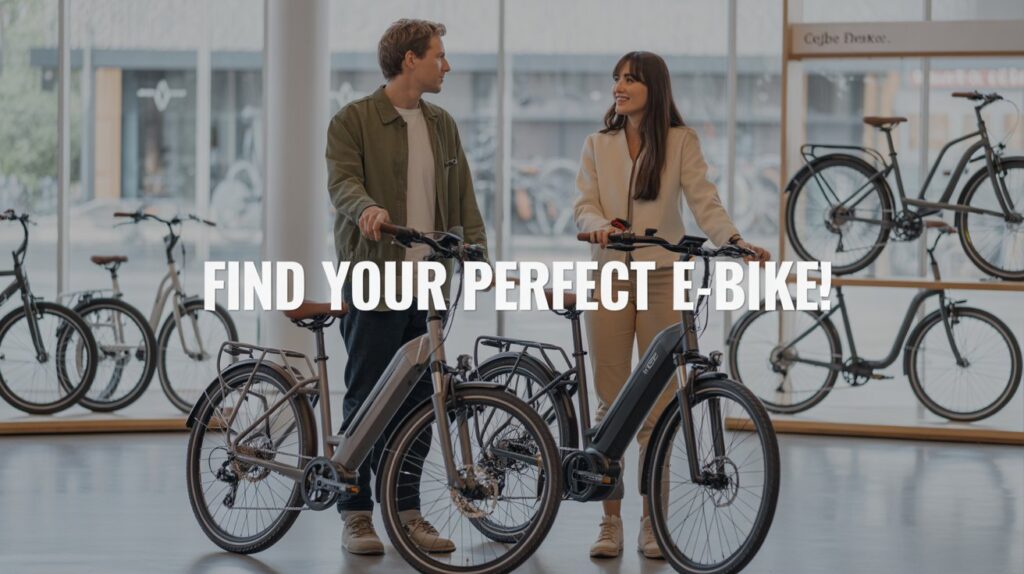Electric bikes, or e-bikes, are transforming the way people travel. They combine the convenience of cycling with the power of electric assistance, making them ideal for commuting, recreation, or even fitness. With so many models and features available, choosing the right e-bike can be overwhelming. Whether you’re a first-time buyer or upgrading your current ride, understanding what matters most will help you make a smart investment.
1. Determine Your Riding Purpose
Before you start comparing models, think about how and where you plan to use your electric bike. Your riding style will determine which type suits you best.
- City commuters: If you plan to ride mainly on paved roads, look for a commuter or urban e-bike. These have thinner tires, upright seating positions, and built-in lights for safety.
- Mountain bikers: For off-road adventures, choose an electric mountain bike (e-MTB) with wide tires, strong suspension, and powerful motors for steep climbs.
- Hybrid riders: A hybrid e-bike offers a balance between comfort and performance, suitable for both city rides and light trails.
- Folding e-bikes: Perfect for small apartments or public transport users — they save space and are easy to carry.
Knowing your main purpose will instantly narrow down your options and help you find a model that truly fits your needs.
That which does not kill us makes us stronger. All human beings should try to learn before they die what they are running from, and to, and why. It is nothing to die. It is frightful not to live.
2. Understand the Motor and Power
The motor is the heart of every electric bike. It determines how smoothly and efficiently the bike assists you while pedaling.
There are two main types of motors:
- Hub motors: Built into the front or rear wheel, these are common in city bikes. They are quieter and require less maintenance but may not perform as well on steep hills.
- Mid-drive motors: Positioned at the bike’s crank (center), they offer better balance, torque, and climbing power — ideal for hilly terrain and off-road riding.
Motor power is measured in watts (W). For most riders, 250W to 500W is enough for daily use, while 750W or higher suits rough terrains and heavy loads. Always check your local regulations, as some regions limit maximum motor power or top speed for e-bikes.
3. Battery Capacity and Range
Battery performance determines how far you can ride on a single charge. It’s measured in watt-hours (Wh). A higher number means longer range — but also more weight and cost.
For short city rides, a 300–400 Wh battery is sufficient. If you plan long trips or mountain rides, consider 500 Wh or more.
Also, check:
- Charging time: Most batteries take 3–6 hours to recharge fully.
- Removable vs. built-in: Removable batteries are easier to charge indoors and replace later.
- Battery lifespan: Quality batteries last around 500–1,000 charge cycles.
Choose a trusted brand like Bosch, Shimano, or Samsung, as reliable batteries ensure safety and long-term performance.
4. Comfort and Design
Comfort is crucial — especially if you’ll ride daily. Pay attention to:
- Frame size and geometry: Make sure the bike fits your height and riding position.
- Suspension: Front or full suspension absorbs shocks on uneven roads, improving comfort.
- Seat and handlebars: Adjustable components help you find the perfect posture for long rides.
Design also matters. Modern e-bikes come in sleek frames, hidden batteries, and multiple color options. A good-looking, ergonomic bike encourages regular use.
5. Brakes, Gears, and Safety Features
Safety should never be an afterthought. High-quality disc brakes (mechanical or hydraulic) provide strong stopping power, even in wet weather. Hydraulic brakes offer smoother control but are slightly more expensive.
Gearing systems vary — from single-speed bikes for flat cities to 10+ speed setups for versatile conditions. Choose one based on your terrain.
Additional safety features include LED front and rear lights, reflectors, and puncture-resistant tires. Some models even include GPS tracking or smart displays with real-time data.
6. Price and Warranty
Electric bikes can range from budget-friendly to premium models. Entry-level options start around $800–$1,200, while high-end e-MTBs or cargo bikes can exceed $4,000.
When comparing prices, consider what’s included — such as accessories, battery size, and after-sales service. Always choose a brand that offers a solid warranty (at least 1–2 years) on the frame, motor, and battery.
7. Test Before You Buy
If possible, take a test ride. This helps you feel the bike’s balance, acceleration, and comfort firsthand. You’ll quickly notice differences in handling, motor response, and overall build quality. A short test can save you from long-term disappointment.
Conclusion
Choosing the perfect electric bike is about balancing performance, comfort, and price according to your lifestyle. Consider your riding needs, check the motor and battery specs, and prioritize safety and fit.
A good e-bike isn’t just a mode of transport — it’s an investment in your health, convenience, and environment. With the right choice, every ride becomes smoother, faster, and more enjoyable.

